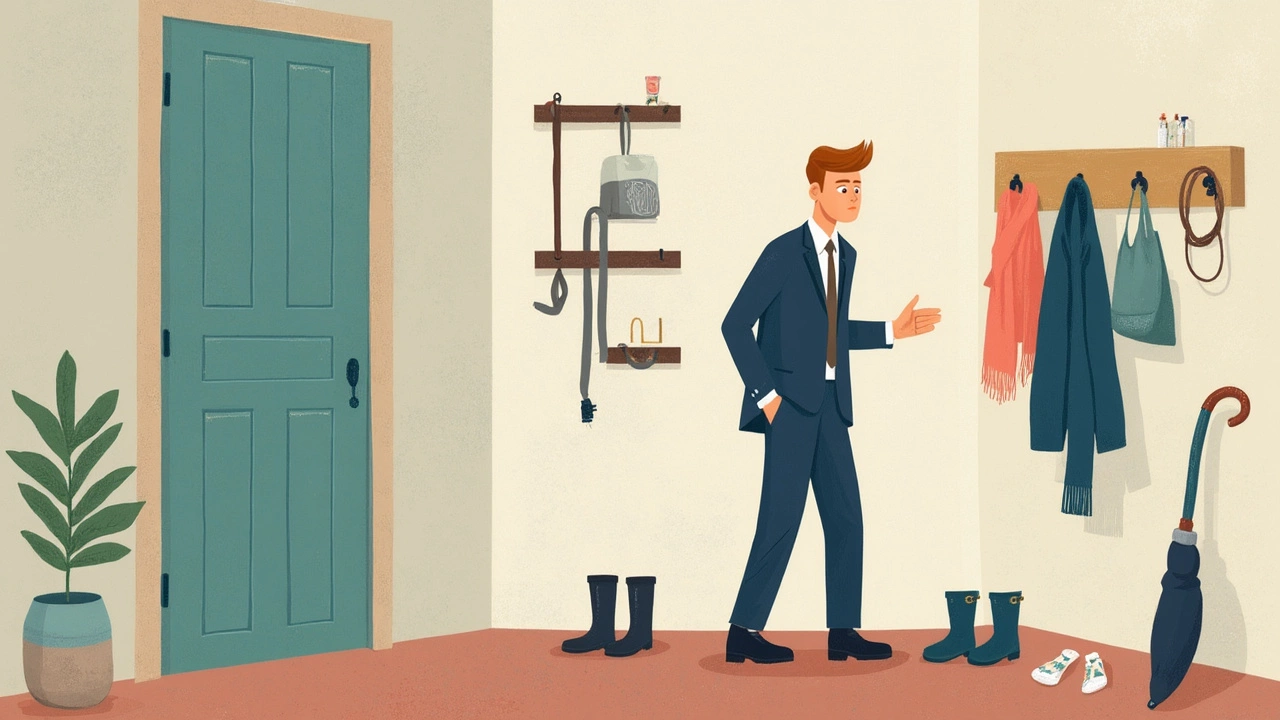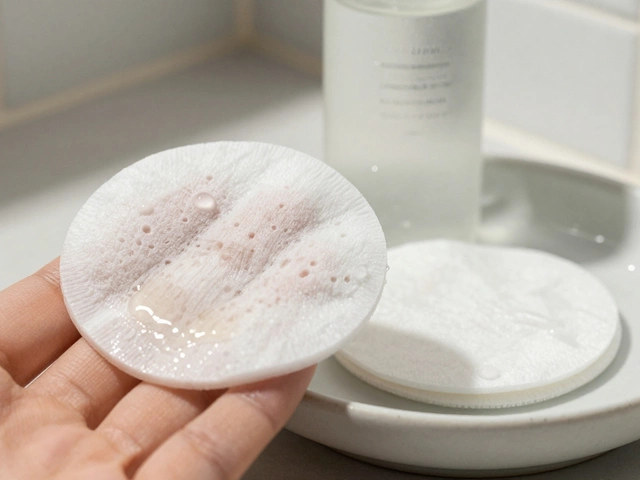Most of us have that one spot in the house where clutter loves to pile up—maybe it’s the kitchen counter or the chair that’s become a coat rack. The Rule of 5 decluttering tackles these messes without making you feel overwhelmed. Every time you walk into a room, you quickly spot five items to deal with. Whether you put them away, throw them out, or add them to a donation bag, it’s fast, doable, and—best of all—takes less than two minutes.
This isn’t about spending an entire Saturday knee-deep in old magazines or mystery kitchen gadgets. It’s a quick, daily routine that sneaks into your existing habits and makes a real dent in the mess. Even if you only do it a few times a day, that could mean fifteen or twenty items cleared by the end of the day. Doesn’t sound much? Believe me, it adds up before you know it.
If you’re like me and have a cat who loves to knock things off tables (looking at you, Whiskers), this rule is a game changer. You can pick up scattered toys or misplaced socks as you go about your business, instead of letting them gather dust. Anyone can try it—no fancy checklists or storage bins needed, just a mental note and the willingness to act.
- What Is the Rule of 5 Decluttering?
- How It Actually Works Day-to-Day
- Real Life Benefits and Why It Sticks
- Rules, Pitfalls, and Pro Tips
What Is the Rule of 5 Decluttering?
The rule of 5 is the opposite of complicated. It’s a simple trick: every time you walk into a room, you spot five things to handle. That could mean putting them in their proper spot, tossing them in the trash, or setting them aside for donation. You decide which five. It works with whatever you see first—mail on the table, shoes by the door, toys under the couch.
Why five? This number hits that sweet spot—not too little, so you see actual progress, but not so much that you get tired and give up. If you live in a busy household, this is especially helpful. Even with pets or kids, five things at a time is totally doable. It's not a trendy hack—this idea's been floating around for over a decade on decluttering blogs and home organization forums because it actually works for real, messy people.
The secret is consistency, not perfection. If you use the rule of 5 a couple times a day, that's easily 35 items dealt with in a week, and over 1,800 things in a year—without setting aside any special cleaning sessions. It's almost like your mess manages itself, bit by bit. Here’s a quick breakdown of how fast it adds up:
| Times per day | Items per week | Items per month |
|---|---|---|
| 1 | 35 | 150 |
| 2 | 70 | 300 |
| 3 | 105 | 450 |
The rule of 5 decluttering method is about being realistic. Most people can’t tackle a mountain of clutter in one go, but nearly everyone can handle five items at a time. It’s a mini victory every time you do it, and you never need to carve out a big chunk of your day. This makes it perfect if you want something low-pressure that actually moves the needle.
How It Actually Works Day-to-Day
Putting the rule of 5 into action is all about small choices that you make every time you walk through your home. You don’t need any fancy tools or a timer. Just your eyes, your hands, and a quick pause. Here’s how it unfolds in real life, step by step.
- Every time you enter a room, look around for the first five things that are out of place or no longer needed.
- Decide right there what you’ll do with each item: put it away, toss it, or drop it into a donate box. Yes, pet toys count too—I’m side-eyeing Whiskers as I write this.
- If an item is too big or you’re pressed for time, make a mental note and count something else toward your five. The rule is meant to be flexible, not stressful.
Say you walk into your bedroom to grab your phone. You might spot a pair of socks, water glass, old receipt, book, and a scarf. In under a minute, you put the socks in the hamper, the glass in the kitchen, the receipt in the trash, the book back on the shelf, and the scarf in the closet. Honestly, you could do this during a podcast or while chatting on the phone.
If you make this a habit—even 2-4 times a day—the numbers start to make sense:
| Times Per Day | Items Cleared/Day | Items Cleared/Month |
|---|---|---|
| 2 | 10 | 300 |
| 3 | 15 | 450 |
| 4 | 20 | 600 |
Imagine walking into a messy living room, following the rule of 5 decluttering for just a week. That’s easily 70–140 fewer things hanging around by Sunday night. And because it’s quick, you’re less likely to burn out or give up. You don’t even have to schedule time—just fit it into your routine, like closing computer tabs at work before you log out.
Little by little, clutter loses the battle. Even if you live with family, roommates, or pets (who try their best to undo your work), everyone can join in or at least not add to the mess. This is what makes the rule of 5 easy to keep going long-term without arguing about cleaning schedules.

Real Life Benefits and Why It Sticks
The cool part about the rule of 5 is how easy it is to keep going. Since you're only handling five things at a time, you never get that "Where do I start?" feeling. Psychologists call it the "small wins" effect—basically, when you see progress fast, your brain wants to keep going. When organizing feels doable, it’s way less tempting to ignore that growing pile of laundry.
Let’s be honest: most home cleanup plans fail because they ask for big blocks of time or big emotional decisions. But if all you need is a quick look around and five items, it actually fits into your real life. You can work it in during a TV ad break or while waiting for the coffee pot to finish. One study out of the University of California found that small chores done often (even for five minutes) were more likely to become a lasting habit than big declutter sessions.
This approach is perfect if your home is busy with kids, pets, or roommates. In my place, I use it after Whiskers has her zoomies—cat toys, shoes, whatever got knocked over goes right back where it belongs in one quick swoop. You don’t even need a fancy system. A grocery bag for donations and a trash bin nearby do the trick.
The perks add up, too. Here’s what people notice when they stick with the rule of 5 decluttering for a week or more:
- Less daily mess—surfaces actually stay clear
- Way less stress about company dropping by
- You stop losing things (no more mini panic attacks over missing keys)
- The family gets in on it—you set the example and it’s easy to explain
- It doesn't eat up your free time
Want to see how quickly those small wins add up? This table shows what happens if one person just does the rule of 5 twice a day for a month:
| Days | Daily Items Cleared | Total Items Cleared |
|---|---|---|
| 7 | 10 | 70 |
| 14 | 10 | 140 |
| 30 | 10 | 300 |
Three hundred things out of your space in just a month, and you barely felt a thing. That’s the magic. The rule of 5 brings real change and actually sticks because it fits into your life—not the other way around.
Rules, Pitfalls, and Pro Tips
The first rule with the rule of 5 is simple: when you enter a room, deal with five items. That’s it. No overthinking, no exceptions based on “sentimental value” or whatever mood the weather puts you in. If you’re really pressed for time, even three things can make a difference, but stick to five if you want results that you can actually see.
Here’s where a lot of folks slip up—they treat five things as their only daily goal, then slip back into old habits for the rest of the day. The trick is to make it something you do every time you enter a room. If you grab a snack, spot a couple of dishes, a junk mail envelope, a stray water bottle, and a cat toy (yep, my Whiskers again), boom, that’s your five.
- Routine matters: Try to tie decluttering to things you already do—coming home from work, getting a coffee, or just switching rooms. This makes it stick way better.
- Don’t overcomplicate: You don’t need a timer. You don’t need a notebook. Just five things, no guilt if it’s not Instagram-worthy tidy.
- Don’t let ‘maybe’ items stall you: If you hesitate, put it in a “decide later” bin, but don’t let that bin explode. Check it weekly—it shouldn’t become its own pile of doom.
- Enlist help: If other people share your space, challenge them. Make a game out of it with kids (or less-motivated grownups).
Pitfalls? The biggest is thinking these small steps don’t matter. But when researchers from UCLA looked at American families, they found visible clutter in homes spiked stress hormones (yikes). Small actions add up. Another biggie: not having an easy spot for toss/donate items. Make a donation box by the door or a trash bag you can tie up every couple of days—it makes sticking to this decluttering rule easier.
| Common Pitfall | Quick Fix |
|---|---|
| Letting clutter “hide” in closets or drawers | Declutter those sometimes—use rule of 5 for hidden zones too |
| Re-homing items but not really tossing anything | Follow the ‘one in, one out’ idea now and then |
| Going too hard then burning out | Small, consistent steps beat occasional dramatic efforts |
My best pro tip? Keep a visible box or basket on each floor for donations or hideaways. That way, you don’t keep moving stuff from one surface to another. And finally—reward yourself. Seriously, once a week, take five minutes to notice the difference you made. Even better if you do it while curled up on the now-clear couch, maybe with a purring cat in your lap.





